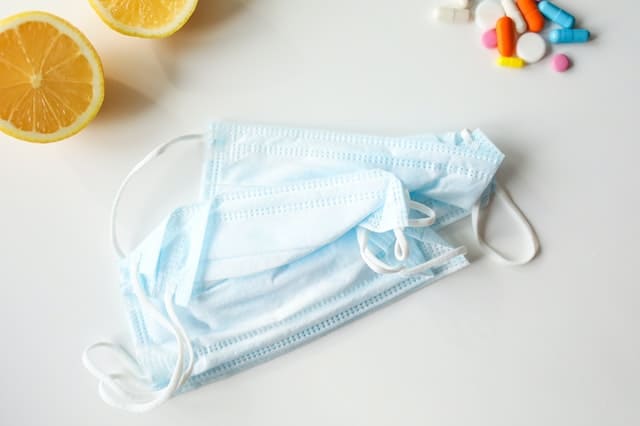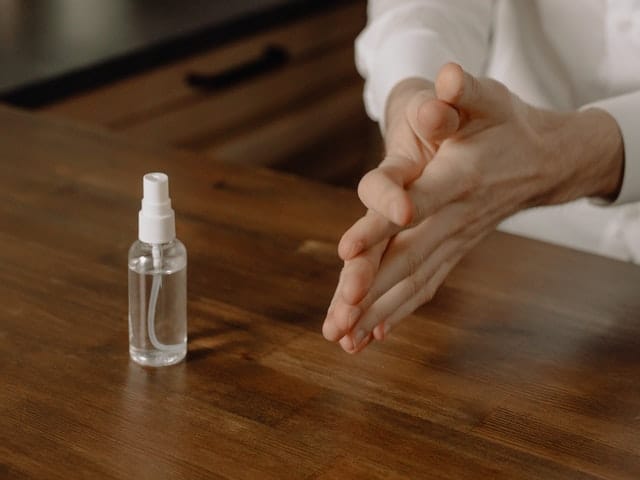COVID-19’s impact is something that all of us were not able to predict, even beyond our wildest dreams. Before the pandemic hit, everyone was going through their daily routines, minding their own business, focusing on their own dreams, goals, and aspirations. Once the virus struck, lives were left in disarray, looking for answers and guidelines on how to protect themselves during the pandemic. Indeed, it is something that caught the whole world off-guard, with many innocent onlookers relying on the news as the main source of information. What everyone knows so far is that COVID-19 originated from China, making its presence felt within the last few months of 2019 and making its waves during the first quarter of 2020. We now find ourselves in 2021 and many things have changed since then, not with the rapid progress of the virus, but with the implementations and safety measures taken to ensure that everyone stays safe during these trying times.
To further invoke a feeling of change and vigilance throughout the world, governments began to roll-out policies that are tailor-fitted to deal with the current pandemic at hand, a handbook in facing the “new normal,” as it was dubbed on the news. You may ask, “Did these regulations help out people in the long run? These were implemented during the first quarter of 2020, and where do we stand now?” Well, here are just a few highlights which aims to remind you of these policies and the possible changes which may have been implemented along the way.
The following is an official excerpt from the Department of Health’s (DOH) handbook, “A Guide to the New Normal.”
“The new normal revolves around the four strategies of the DOH’s 5-point strategy to reduce COVID 19 related and non COVID 19 deaths – (1) increase resilience, (2) stop transmission, (3) reduce contact, (4) shorten duration of infectiousness. With this, the DOH has developed minimum public health standards across different settings to aid the general public and the different sectors as we transition into the new normal.
Further to this, the DOH’s policy development and program planning initiatives remain aligned with the Minimum Public Health Standard s. The Department will continue its other services and programs considering that the primary goal of its COVID-19 response is to prevent both COVID-19 and non-COVID-19 deaths.”
It is important to note that the DOH at least had a preliminary plan which contributed to curbing the spread of the virus. Of course, at the time of writing, there are over 500,000 cases of COVID-19 in the Philippines, with 466,993 people recovering and over 10, 000 deaths. Indeed, the numbers are high, but just imagine how worse it could have been if guidelines weren’t rolled out. The thing about the DOH’s guidelines is that they were at least effective in cutting down the numbers at the first sign of trouble.
Now, you may have noticed from the excerpt that DOH mentioned a 5-point strategy to reduce COVID 19 related and non COVID 19 deaths. We will be discussing them next, what they are in essence, and their functions.

- Increase Resilience
According to the DOH’s handbook, this pertains to our health, our body, our immune system and how we may best strengthen them further during the pandemic. A particular excerpt states that the first strategy hopes to “ensure access to basic needs of individuals, including food, water, shelter and sanitation.” They also aim to “promote adequate nutrition and balanced diets.” For the most part, prevention is always better than cure, but that doesn’t mean that we should stop caring for our body. Eating your fruits and vegetables would greatly help with the fight against COVID-19. - Stop Transmission
You may have heard of the saying “cleanliness is next to godliness.” That is true, especially during our current situation. The very nature of COVID-19 itself is enough reason to implement handwashing and sanitation throughout the country. The DOH explicitly states this within their handbook: “To encourage frequent hand washing with soap and water and refrain from touching the eyes, nose, and mouth.” They also wish to “ensure access to basic hygiene facilities such as toilets, handwashing areas, water, soap, alcohol/ sanitizer.” - Reduce Contact
The pandemic definitely tested people’s patience and discipline. While many of us still prefer to enjoy our weekends outdoors, we may have to leave it off for now due to the severity of the current pandemic. The virus is no joke, and the number of people around the globe who’ve succumbed to the dreaded COVID-19 is hard proof of that. The handbook states that they aim to “implement strict physical distancing at all times, especially in public areas, workstations, eating areas, queues, and other high traffic areas.” As unfortunate as it may seem, they also opt to “restrict unnecessary mass gatherings,” so the recent Holiday season saw a massive drop in sales, with regards to the businesses which usually depends on the influx of Christmas shoppers. - Shorten the Duration of Infectiousness
This is pretty critical in essence, which is why we prefer to cite the main guideline as a whole:- Identify symptomatic individuals through temperature checks, health declaration or symptom monitoring.
- Refer symptomatic individuals to appropriate health system entry points such as primary care facilities or teleconsulting platforms.
- Trace and quarantine close contacts of confirmed individuals consistent with DOH guidelines.
- Enhance Quality, Consistency, & Affordability of Care Provision
Simply put, DOH aims to provide intervention whenever it is needed in order to assist with the various sectors of the country. These sectors may include (but aren’t limited to) the health sector, the local barangays, the law enforcement units, etc.
What has changed since then?
A couple of important occurrences, actually. For one, there has been varying offsets of lockdowns, community quarantines, and recurring implementations which yielded differing results per barangay. You may have witnessed them within your tight-knit community at the span of 9 to 10 months. Some barangays implemented strict curfews, perhaps more stern than others due to their high-recorded numbers of positive cases. Classes were suspended, then continued, albeit an online setting. There were suggestions within our government to implement face-to-face classes again, but perhaps, due to the refusal of many students and parents, that suggestion was scrapped. Other changes were rolled out by the DOH within the timeframe of the pandemic as well. Thus far, the following is their actual provision:
The Department of Health (DOH) has updated its interim guidelines on expanded risk-based testing of COVID-19 cases. Department Memorandum No. 2020-0258 was adopted in view of the increased RT-PCR (Reverse Transcription Polymerase Chain Reaction) testing capacity of the country.
The new subgroups broadens the coverage of persons to be tested to include suspect cases, individuals with travel history and exposure (whether symptomatic or asymptomatic), and healthcare workers with possible exposure (whether symptomatic or asymptomatic).
The following list of subgroups of individuals are considered at-risk and are eligible for testing, arranged from greatest to lowest need for testing:
- Subgroup A: patients or healthcare workers with severe/critical symptoms, and relevant history of travel or close contact;
- Subgroup B: patients or healthcare workers with mild symptoms, with relevant history of travel or close contact and who are considered vulnerable. These vulnerable populations include the elderly and those with pre-existing medical conditions that predispose them to severe presentation and complications of COVID-19;
- Subgroup C: patients or healthcare workers with mild symptoms, and relevant history of travel or close contact;
- Subgroup D: patients or healthcare workers with no symptoms but with relevant travel history and close contact;
- Subgroup E: frontliners indirectly involved in healthcare provision in the response against COVID 19; and
- Subgroup F: other vulnerable patients such as those with comorbidities, those who will undergo high-risk, elective surgical procedures, those living in confined spaces, and others.
So, these are all the updates with regards to our current situation and the updated guidelines from the official DOH handbook. With all of these in mind, it may be no surprise that you’re looking for ways to further protect your family’s future and welfare. The current pandemic has taught us to be vigilant and prepared, and indeed, it is a lesson we will put to heart even when the pandemic is over. If you’re still weighing your options, then look no further than Cebuana Lhuillier’s Microinsurance Services. It offers affordable insurance products that enable Filipinos to avail financial services and privileges that higher-income earners have easy access to. Aside from that, it also features innovative microinsurance products and services that promise to minimize the impact of distress and misfortune on one’s financial position. Feel free to visit your nearest Cebuana Lhuillier branch for more information.

